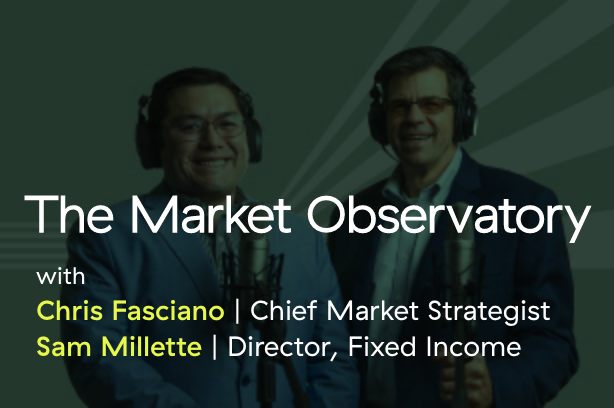 As of the end of trading on Thursday, March 13, the S&P 500 closed down 10 percent from its all-time high, marking an official correction. It was the first correction since October 2023—17 months ago. From an investment horizon perspective, that isn’t that long. While there wasn’t an official correction in 2024, there was an 8 percent drawdown. Still, those two years ended with the S&P 500 up 24 percent and 23 percent, respectively.
As of the end of trading on Thursday, March 13, the S&P 500 closed down 10 percent from its all-time high, marking an official correction. It was the first correction since October 2023—17 months ago. From an investment horizon perspective, that isn’t that long. While there wasn’t an official correction in 2024, there was an 8 percent drawdown. Still, those two years ended with the S&P 500 up 24 percent and 23 percent, respectively.
No doubt this one happened quickly, covering only 16 trading days. In fact, it was the quickest correction since the early days of the global pandemic, when it took just 6 days for the market to decline. So, where do we go from here? Let’s start by taking a look at history.
What Does History Say?
Sell-offs never feel good, and emotions run high during periods of turmoil. But the magnitude of this correction and the speed at which it happened weren’t unprecedented. All things being equal, history tells us corrections are usually a good time to look for opportunities.
One year is a relatively short time horizon, as most long-term investors look out further than 12 months. But using a timeframe of one year, a correction could be a buying opportunity based on data from the past 15 corrections spanning 17 years.

In the chart above, the first four periods were within the great financial crisis bear market. This period remains the most challenging of my career, which has spanned more decades than I care to admit. The daily headlines were scary, and simply turning on the computer was a stressful experience. But even with a short window, only the first time period resulted in negative returns. In the following nine years, the market had positive returns in seven of those years, and the two years that were negative saw declines of less than 1 percent.
Similar action can be seen in 2022, when we had an inflation scare that saw Consumer Price Index readings rise to 9.1 percent in June. The same pattern holds during this period: returns after the first correction 12 months out were negative, albeit much smaller than the 2008 experience, and the others were positive. This was followed by the previously mentioned back-to-back +20 percent years.
Most of the other periods were corrections in an uptrend that continued. Even the 2020 pandemic bear market sell-off was short-lived.
Are Things Different This Time?
During every market decline of my career, everyone has asked if it is different this time. And while the catalysts might be different, the market action usually isn’t. Concerns about the future path of economic growth drive sell-offs. Investors believe we are now at one of those inflection points
As Mark Twain said, history doesn’t repeat itself, but it does often rhyme. What if anything can we learn from 2018’s trade war?

We can see that the market experienced volatility around tariff announcements, with rallies in between. The largest drawdown resulted from the cumulative effect of multiple tariff implementation announcements. It also occurred when the Fed was raising interest rates—that element is not at play today.
The S&P 500 closed down 6.2 percent in 2018 after a sell-off in December that coincided with the final Fed rate increase of that cycle. And the market didn’t truly stop worrying about tariffs until the Phase 1 Deal was announced with China in 2019. But the market had adjusted to tariffs by then and rallied 28.9 percent that year as the Fed cut rates. The takeaways that might apply to the current environment are that volatility is probably here to stay, deals take a while to negotiate, and the Fed matters.
What Does It Mean for Long-Term Investors?
Emotions run high during market declines. But it is impossible to time markets, and markets have never needed bad news to end before discounting better times. After all, how many people called a market bottom on March 9, 2009, in the throes of the great financial crisis or on March 23, 2020, when a global pandemic had us all housebound?
Rebalancing. Volatility can quickly result in portfolios being out of line with their investment objectives, causing unintended risks and making it challenging to achieve long-term goals. At a minimum, rebalancing back to targeted allocations will result in portfolios being aligned with the investment objectives needed to meet goals over a long-term time horizon.
Dollar-cost averaging. The best time to put capital to work is when it feels like the worst time to do so. Of course, this isn’t easy. With dollar-cost averaging, setting a weekly, monthly, or quarterly schedule to invest money into the market can remove emotion from the decision, while avoiding trying to time the market.
Bucket strategy. Many investors have different timeframes for different pools of money. The bucket strategy includes having a short-term income need bucket, an intermediate-term bucket, and a long-term bucket. With each bucket including different asset allocations and risk profiles, this strategy could help weather short-term volatility while maintaining longer-term assets in the market to participate when stocks begin to rise again.
Balance Is Key
Staying balanced across asset classes, market caps, styles, geographies, credit quality, and duration can help navigate any further volatility due to a change in the consensus on the economic outlook. Diversification has been out of favor over the past several years, but I believe it remains a useful strategy. While the sell-off has been led by some of the winners of the last few years, other parts of the market like health care, energy, and real estate have had positive returns. International markets have also outperformed during the period, which hasn’t happened in a while. Finally, fixed income is providing the ballast to portfolios that was missing during 2022. Over a longer time period, bonds have tended to perform well during periods of equity market volatility.
Dollar-cost averaging is a systematic investment plan that involves continuous investment, regardless of market conditions. Markets will fluctuate, and clients must consider their ability to continue investing during periods of low price levels. Systematic investment plans do not assure a profit or protect against loss in declining markets.


 Print
Print

